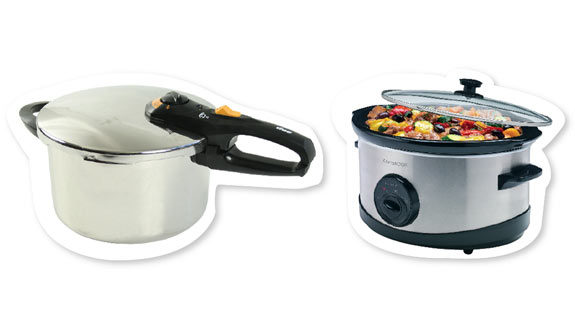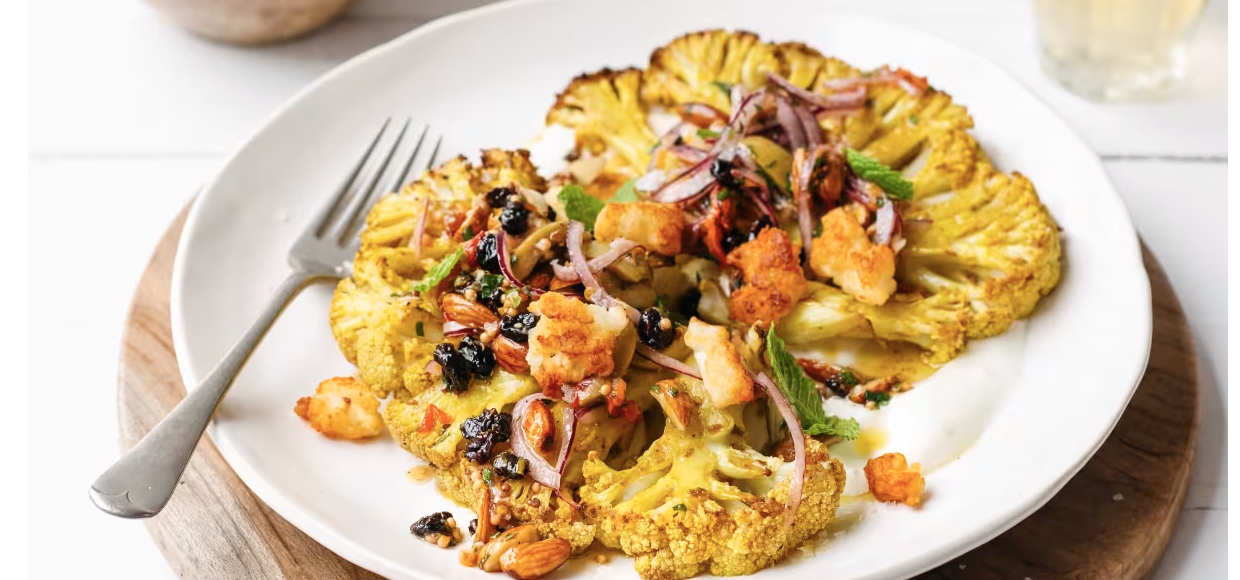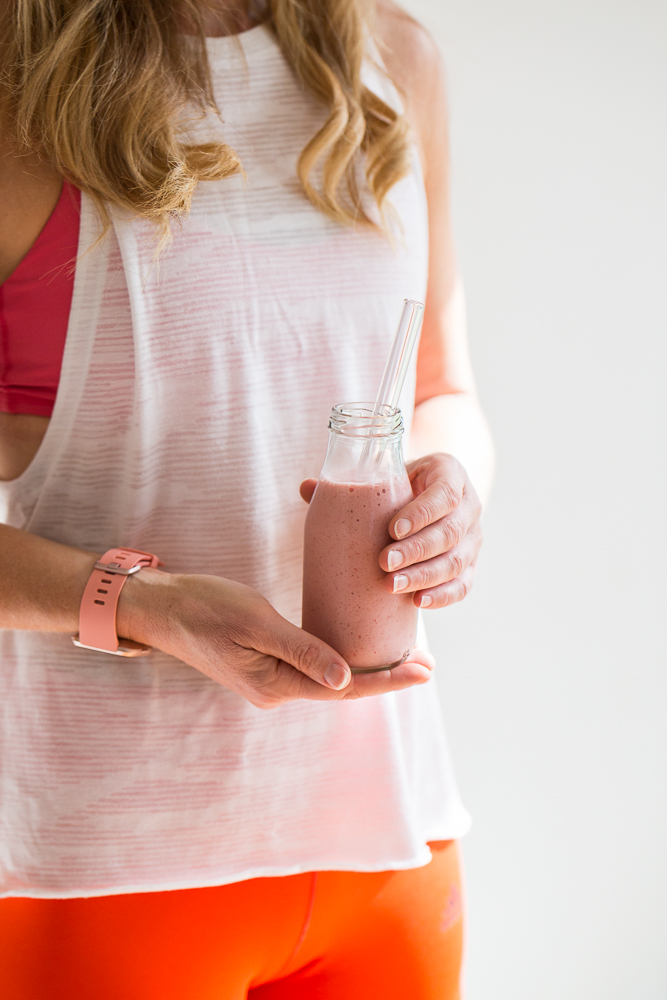Pressure cookers and crockpots hold traumatic childhood memories for Sarah Heeringa—but now hungry kids of her own and a daily need for efficient meals has her facing her fears. But which way to jump: fast and furious, or slow and low?
Pressure cookers and crockpots hold traumatic childhood memories for Sarah Heeringa—but now hungry kids of her own and a daily need for efficient meals has her facing her fears. But which way to jump: fast and furious, or slow and low?
Crockpots, or ‘slow cookers’, as they’re generically known, are 70s children: their low wattage suited to that decade’s energy crisis and the motto, ‘cooks all day while the cook’s away’ made sense given women’s changing roles. What I remember are the watery stews dished up by my best friend’s crockpotting mother.
Pressure cookers, in comparison, are full of sound and fury. Even worse than tastess stew was the daily terror of Mum’s old aluminium pressure cooker jiggling menacingly on the stove. We all kept a safe distance—and with good cause. Its dicky steam valve would regularly jam, once blowing off with a bang and blasting a boiling geyser of potato ceiling-wards. Undeterred, my mother upgraded to a huge stainless steel beast with a screw-down clasp and extra valves. Over the ensuing years, the infernal pot produced untold speedy casseroles, tender chooks and sticky jam.
Pressure cookers are ideal for quick meals. Slow cookers, by contrast, require you to be organised well ahead of mealtimes. But once your ingredients are prepared, you can leave the house knowing you’ll return to a hearty soup, stew or chilli. Cookers come in a variety of sizes. Each has a ceramic cooking dish and metal surround housing a thermostatically controlled element. They typically operate below boiling point, from 60–93°C (60°C will kill bacteria). The internal ceramic pot acts as a heat reservoir so, unlike an oven, the cooker doesn’t heat up the kitchen—which is handy in summer.
Some slow cookers will switch to a warm mode after a set time, or once food reaches a certain temperature. Timers with delay functions and a glass lid are other handy features. (Checking on progress without lifting the lid saves heat.) A one-pot meal makes for an easy clean-up; low temperatures and a glazed cooking surface means no pots to scrub.
But how efficient are they, really? Slow cookers run far longer than other appliances, but they draw considerably less power. But check your cooker’s wattage; some newer models are far more efficient than older ones. The six-litre stainless steel Kambrook KSC100 (valued at $89, available from Breville stockists) ranked highest in Consumer NZ’s last test and runs on 320 watts. (Power is measured in units: one unit equals 1,000 watts of power used for one hour. If your power costs 20 cents per unit, that cooker on high will cost 6.4 cents per hour to run.) In comparison, a microwave might use 750–1,600 watts; an oven more than 2,000 watts. Also, a slow cooker on all day puts less demand on the electricity grid at peak times.
Slow cookers can be left alone, but not pressure cookers. Internal pressure forces up the boiling point to cook really fast: fresh green beans in three minutes, brown rice and lentils in ten minutes instead of 45, an entire chook in 20 minutes. Super-efficient, considering a stove element draws about 1.8 units, costing less than 40 cents per hour to run.
These cookers need very little added liquid so they retain water-soluble vitamins and veggies keep their colour and phytochemicals. The high temperatures effectively kill bugs so the cooker can also be used to sterilise jam jars and even water. One criticism is that the speed doesn’t allow flavours to develop—counter this by first browning meat and caramelising onions and garlic. Pressure cookers are usually heavy because they need to be strong. Older cookers were made from aluminium, but the best new models are stainless steel with a heavy-gauge or copper base for optimum thermal conductivity. Choose a cooker with a locking lid, a pressure-release valve for quick cooling before opening, and a pressure indicator to show when correct pressure has been reached.
But are they safe? Modern cookers, I’m assured, are better than old ones. The Fagor Duo ($282 from Milly’s Kitchen) topped the latest Consumer NZ test and Australia’s Choice Online and has a triple-safety mechanism of valves and locks. Fancy features aside, these cookers still need to be maintained to function properly. Hissing or steam escaping from anywhere other than the pressure regulator, for instance, is a sign that the gasket or seals need replacing.
Fast and steamy or low and slow? All things considered (including a natural inclination towards drama) I think I’m ready to face down past dragons with my very own pressure cooker.





